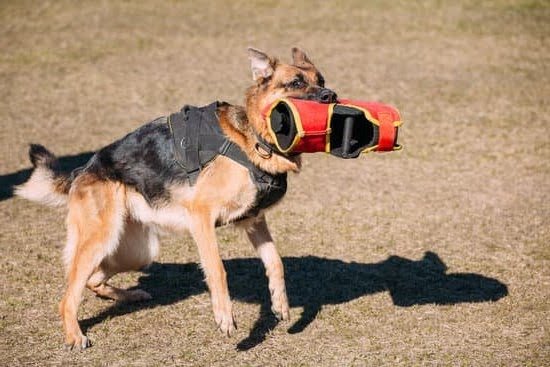Are you wondering how to train your dog for a plane ride? Traveling with pets, especially dogs, has become increasingly popular in recent years. As more people opt to bring their furry companions on trips, it’s crucial to ensure that your dog is well-prepared for the experience of flying. This article will provide valuable insights and tips on training your dog for a smooth and stress-free plane ride.
Understanding your dog’s behavior is essential when preparing them for air travel. Dogs may react to being on a plane with anxiety, stress, and discomfort. It’s important to recognize common signs of anxiety in dogs during travel and be proactive in addressing these behaviors. By acclimating your pet to the travel crate and using desensitization techniques, you can help them adjust to the sounds and sensations of flying.
Preparing your dog for the plane ride involves crate training and desensitization exercises. This section will provide a step-by-step guide to crate training your dog specifically for air travel. Desensitization exercises will also be covered to help ease any anxieties or fears your pet may have regarding flying. Additionally, obedience training will be discussed as an important aspect of ensuring that your dog remains calm and well-behaved during the flight.
Understanding Your Dog’s Behavior
When it comes to traveling with your dog, it is important to understand their behavior and how they might react to being on a plane. Dogs, like humans, can experience anxiety and stress during travel, especially when it involves flying.
It is not uncommon for dogs to exhibit signs of nervousness such as panting, pacing, whining, or even showing signs of aggression. It is essential for pet owners to recognize these behaviors and take steps to help their dogs feel more at ease during the flight.
Some common anxiety and stress behaviors in dogs during travel include drooling, shaking, barking excessively, or refusing to eat or drink. These signs can be distressing for both the dog and the owner. Therefore, it is crucial for pet owners to be aware of their dog’s behavior and work towards addressing any issues before embarking on a plane ride.
To help your dog feel more comfortable during a plane ride, there are several steps you can take beforehand. Desensitization techniques can be used to prepare your dog for the sounds and sensations of flying.
This involves gradually exposing them to elements they will encounter during the flight, such as the sounds of airplane engines or wearing a harness for extended periods. By familiarizing your dog with these experiences in advance, you can help reduce their anxiety and ensure a smoother travel experience overall.
- Observe your dog’s behavior at home and identify any signs of anxiety or stress
- Introduce your dog slowly to their travel crate or carrier
- Use positive reinforcement techniques such as treats or toys to create positive associations with the crate
- Gradually increase the amount of time your dog spends in the crate leading up to the trip
- Play recordings of airplane noises at a low volume while rewarding calm behavior
By understanding your dog’s behavior and taking proactive steps to address any anxiety or stress they may experience during air travel, you can make the journey much more manageable for both you and your furry friend.
- Encourage relaxation with soothing scents like lavender oil or calming pheromones
- Avoid overbearing physical contact if your dog seems uneasy – assure them from a distance instead.
- Research training services that specialize in helping animals manage stressful situations speak with professionals who specialize in this kind of animal behavior management.
Preparing Your Dog for the Plane Ride
Training your dog for a plane ride is crucial to ensure they remain calm and comfortable throughout the journey. One of the first steps in preparing your dog for the plane ride is to get them accustomed to their travel crate.
It’s important to choose a durable and appropriately sized crate for your dog, allowing them enough room to stand, turn around, and lie down comfortably. Start by placing treats and familiar items in the crate to create positive associations, gradually increasing the amount of time your dog spends inside.
Desensitization techniques are also essential when preparing your dog for air travel. This involves exposing your dog to the sounds and sensations they will experience during the flight. You can simulate airplane noises by playing recordings of engine sounds at a low volume and gradually increase it over time. Additionally, practice carrying the crate with your dog inside, gently rocking it as you would experience during turbulence on a flight.
When acclimating your dog to their travel crate, it’s important to ensure that they see it as a safe and comfortable space rather than a place of confinement. Incorporating their favorite toys, bedding, and blankets can help create a cozy environment within the crate that makes them feel secure during the flight.
It’s important to start this process well before your planned trip so that you have enough time to train and desensitize your dog effectively. Patience and consistency are key when training your dog for a plane ride, so be sure to dedicate ample time each day to these preparations.
| Prepare Your Dog Crate | Desensitization Techniques |
|---|---|
| Choose an appropriately sized durable crate | Expose your dog to airplane sounds gradually |
| Place treats and familiar items inside | Practice gentle rocking like turbulence in flight |
| Incorporate favorite toys, bedding, and blankets | Start training well before planned trip |
Crate Training and Desensitization
Crate training is a crucial part of preparing your dog for air travel. It is important to choose a crate that is airline-approved and the right size for your dog. Introduce the crate to your dog gradually, allowing them time to explore and get comfortable with it. Place their favorite toys or blankets inside to create a positive association with the crate.
Desensitization is another essential aspect of preparing your dog for a plane ride. This involves getting your dog used to the sounds and sensations they will experience during the flight. You can do this by playing recordings of airport noises, as well as gently rocking the crate to simulate movement. Gradually increase the duration of these desensitization exercises to help your dog become more at ease with flying.
It’s important not to rush crate training and desensitization, as every dog will adapt at their own pace. Stay patient and provide positive reinforcement, such as treats and praise, whenever your dog shows progress in getting accustomed to their travel crate.
| Crate Training Tips | Desensitization Techniques |
|---|---|
| Choose an airline-approved crate | Play recordings of airport noises |
| Introduce the crate gradually with positive associations | Gently rock the crate to simulate movement |
| Use treats and praise for positive reinforcement | Increase duration of desensitization exercises gradually |
Obedience Training for Travel
Importance of Obedience Commands for Flying
When it comes to traveling with your dog, having a well-behaved and obedient pet can make all the difference. Obedience training is essential for ensuring that your dog remains calm, relaxed, and well-mannered during the flight.
Basic commands such as sit, stay, and down can help you manage your dog’s behavior in the confined space of an airplane cabin. Additionally, obedience training can also help to alleviate any stress or anxiety that your dog may experience during the travel process.
Training Exercises for Travel
To prepare your dog for a plane ride, it’s important to incorporate specific training exercises that mimic the conditions of air travel. This includes practicing commands in unfamiliar environments, exposing your dog to different noises and distractions, and teaching them to remain calm in various situations.
Training exercises should also focus on desensitizing your dog to the sensations of flying, such as turbulence and changes in air pressure. By incorporating these exercises into your obedience training regimen, you can help your dog feel more comfortable and confident during the flight.
Positive Reinforcement and Patience
When training your dog for air travel, it’s crucial to use positive reinforcement techniques and have plenty of patience. Rewarding your dog for good behavior with treats, praise, or toys can reinforce obedience commands and help them associate positive experiences with travel. It’s also important to be patient with your dog as they adjust to the new experiences associated with flying.
Consistent training and positive reinforcement will go a long way in preparing your pet for a successful plane ride. Remember that every dog is unique, so it’s essential to tailor your training approach to suit their individual temperament and needs.
Health and Safety Considerations
Traveling with your dog by plane can be an exciting and rewarding experience, but it’s important to prioritize your pet’s health and safety throughout the process. Just like humans, dogs can experience stress and discomfort during air travel, so it’s crucial to take the necessary steps to prepare them for the journey.
Preparing Your Dog’s Health for Air Travel
Before embarking on a plane ride with your dog, it’s essential to ensure that they are in good health. Schedule a visit to the veterinarian to make sure your pet is up-to-date on vaccinations and is fit for travel. Additionally, discuss any specific health concerns or considerations related to air travel with your vet. They may recommend measures such as providing calming supplements or medications to ease your dog’s anxiety during the flight.
Safety Precautions for a Smooth and Stress-Free Flight
When traveling with your dog by plane, there are several safety precautions to keep in mind. Firstly, make sure that your pet’s travel crate or carrier meets airline requirements and provides adequate ventilation and space for comfort. It’s also important to attach identification tags with updated contact information in case of separation during travel. Additionally, pack essentials such as food, water, medications, and familiar items like toys or blankets to keep your dog comfortable throughout the journey.
Taking proactive steps to prioritize your dog’s health and safety during air travel will not only ensure a smooth flight but also promote their overall well-being. By being prepared and attentive to their needs, you can make the traveling experience enjoyable for both you and your furry companion.
Making the Most of Your Dog’s Plane Ride
In conclusion, training your dog for a plane ride is an essential step in ensuring a smooth and stress-free travel experience for both you and your furry friend. With the increasing trend of traveling with pets, it’s important to understand how your dog might react to being on a plane and take the necessary steps to prepare them for the journey.
By acclimating your dog to their travel crate, desensitizing them to the sounds and sensations of flying, and providing obedience training, you can help your dog remain calm and well-behaved during the flight.
It’s crucial to prioritize your dog’s health and safety when preparing for air travel. Ensuring that they are up-to-date on vaccinations, have a clean bill of health from their veterinarian, and taking necessary precautions for a stress-free flight will make all the difference in their traveling experience.
Additionally, bringing along essential items such as food, water, toys, and comfort items can provide a sense of familiarity for your dog and help keep them calm during the journey.
Ultimately, making the most of your dog’s plane ride involves being proactive in their training and preparation, as well as being attentive to their needs throughout the entire travel process. By following these dos and don’ts of traveling with your dog and implementing strategies to keep them comfortable during the flight, you can ensure that both you and your canine companion have an enjoyable and successful travel experience.
In closing, training your dog for air travel may require time and patience but is well worth the effort when it comes to ensuring a positive experience for both you and your pet. With proper preparation, obedience training, health considerations, and attention to comfort during the flight, you can make traveling with your dog an enjoyable adventure rather than a stressful ordeal.
Frequently Asked Questions
How Do You Train Your Dog to Fly?
Training a dog to fly begins with desensitization to the sights and sounds of an airport and an aircraft. Gradually introducing the dog to the environment, providing positive reinforcement, and using a familiar crate can help make flying less stressful for them.
How Do I Calm My Dog Down on a Plane?
To calm a dog down on a plane, start by taking them for a long walk before the flight to tire them out. Use calming aids like pheromone spray or natural calming remedies. Comfort them with their favorite toys or blankets during the flight.
How Can I Make My Dog Comfortable Flying?
Making your dog comfortable while flying involves familiarizing them with their travel crate well in advance of the flight. Packing their favorite toys and comfort items, ensuring they have access to water, and possibly discussing with your vet about any medication or natural remedies that may help with anxiety can all contribute to their comfort during the journey.

Welcome to the blog! I am a professional dog trainer and have been working with dogs for many years. In this blog, I will be discussing various topics related to dog training, including tips, tricks, and advice. I hope you find this information helpful and informative. Thanks for reading!





